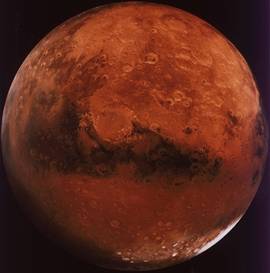Sinfonia da Camera, founded almost thirty years ago, is comprised of musicians from the Midwest. The chamber orchestra has nineteen finished recordings and four more in the making. Ian Hobson, Sinfonia’s capable leader, is an accomplished soloist and conductor whose resume of recorded work includes a sixteen-volume collection of Chopin’s entire catalog, making Hobson the only single artist to record it. I learned all of this information from reading the program. What I gained from the performance is quite a different matter.
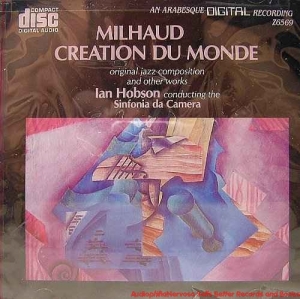 By simply listening, I knew that Sinfonia’s first piece, La Creation du Monde, was full of American jazz influence. It took some reading to confirm what I suspected. La Creation du Monde was composed by Darius Milhaud, who described the effect of Harlem jazz as “overwhelming,” something he “could not tear [himself] away from.” As the group played Pass the Theme through five movements, I heard clock-gear percussion, clarinet work, and syncopation that kept me happy enough to smile to myself. I loved the quirky nature of syncopated rhythm, hitting the off beat, but the clarinet is what soothed me. Its soulful notes soared over the group like a thin, graceful bird. The effect was lovely.
By simply listening, I knew that Sinfonia’s first piece, La Creation du Monde, was full of American jazz influence. It took some reading to confirm what I suspected. La Creation du Monde was composed by Darius Milhaud, who described the effect of Harlem jazz as “overwhelming,” something he “could not tear [himself] away from.” As the group played Pass the Theme through five movements, I heard clock-gear percussion, clarinet work, and syncopation that kept me happy enough to smile to myself. I loved the quirky nature of syncopated rhythm, hitting the off beat, but the clarinet is what soothed me. Its soulful notes soared over the group like a thin, graceful bird. The effect was lovely.
The other two-thirds of the program were why I attended the symphony in the first place. Gustav Holst’s The Planets is a popular piece. People love it, and I am no exception. I enjoyed it, first, when I was a violinist in middle school and we played the fourth movement, Jupiter. It was my favorite then, and I was curious to see what I would think of it now, especially with the other movements intact.
It should be noted that Holst did not intend his music to be associated with ancient, mythological deities, but rather with astrology. I find it hard to separate my rusty knowledge of Roman (or Greek) myth from the little I know of astrological characters. That may be because the overlap is complete.
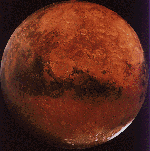 The first movement of The Planets is Mars, the Bringer of War. Mars is the god of war in mythology and in the zodiac. Holst chooses to portray this particular character with a mixture of blaring brass and the marching staccato of strings. It may have been the light reflecting off of the brass section, but I could almost see the armored breastplates and spear tips of soldiers marching to battle.
The first movement of The Planets is Mars, the Bringer of War. Mars is the god of war in mythology and in the zodiac. Holst chooses to portray this particular character with a mixture of blaring brass and the marching staccato of strings. It may have been the light reflecting off of the brass section, but I could almost see the armored breastplates and spear tips of soldiers marching to battle.
Venus is the warm, round, and soothing second movement. The cello is dark and smooth and absolutely mesmerizing. Add a blend of flutes, and I can actually see Venus walking through a garden, her long, dark hair draped over one shoulder.
In my brain, Mercury darts through traffic, oddly enough, as a modern bike messenger in the third movement. The brief ringing of bells is surely missed by some listeners, but I could close my eyes and see the sun shining off of turning gears and pedals.
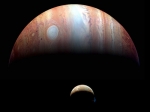 Call me a sheep, but Jupiter, the Bringer of Jollity, is my favorite of Holst’s planet pieces. There’s a reason it’s so popular; it has something for everyone. The sweeping theme at the top lets the listener know a show — an epic adventure — is about to begin. It feels large, cinematic. I was especially grateful, listening to Sinfonia da Camera, for their masterful percussion section. Those musicians can really make or break this piece. The spicy little tambourine portion in the middle was a great pick-me-up. In addition to images of The Hobbit and salsa dancing that it evokes, Jupiter is almost three movements in one. I’m a sucker for a bargain, and this particular movement definitely gives the listener more bang for her buck.
Call me a sheep, but Jupiter, the Bringer of Jollity, is my favorite of Holst’s planet pieces. There’s a reason it’s so popular; it has something for everyone. The sweeping theme at the top lets the listener know a show — an epic adventure — is about to begin. It feels large, cinematic. I was especially grateful, listening to Sinfonia da Camera, for their masterful percussion section. Those musicians can really make or break this piece. The spicy little tambourine portion in the middle was a great pick-me-up. In addition to images of The Hobbit and salsa dancing that it evokes, Jupiter is almost three movements in one. I’m a sucker for a bargain, and this particular movement definitely gives the listener more bang for her buck.
Saturn, the Bringer of Old Age had the appropriate feeling of a lullaby; Uranus, the Magician had a playful flair; and Neptune, the Mystic was composed as the final movement of The Planets. For those of you wondering “What about…,” the discovery of Pluto was made in 1930, four years before Gustav Holst died. He chose not to add another movement to the already popular suite. Pluto was commissioned to Colin Matthew in 2000, and he didn’t refuse the commission when Pluto’s status as a planet was under debate. I thought I had missed a movement until I read the program after the performance. Matthews apparently added Pluto to the last note of Neptune, making the two orbs a continuous piece. He even used the soprano voices that Holst did for the previous final movement. The female vocals, provided offstage by the UI Women’s Glee Club, added an eery quality to otherworldly effect. I was chilled, haunted.
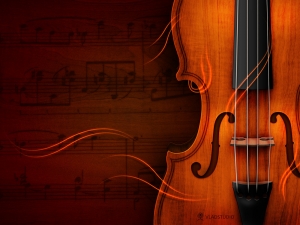 Even in such an enjoyable performance, a critic can find some fault. I suppose one may opt not to make negative comments, but a review that is all candy and flowers is boring. So….
Even in such an enjoyable performance, a critic can find some fault. I suppose one may opt not to make negative comments, but a review that is all candy and flowers is boring. So….
The concertmaster did have a few intonation problems sprinkled throughout the evening. I’ve always been nit-picky about pitch, especially when it comes to violins. They can be impressive at best or grating at worst in the upper range, and I defend my chosen instrument viciously while turning a critical ear to a slightly missed note. While some think a first chair should be heard over the entire section, others feel that particular part should blend with the rest. I still haven’t decided.
Still and all, one would be hard pressed to find a better way to spend an evening. Sinfonia da Camera and its choice of material were (and are) impressive and a joy to hear. And, although this concert has already ended, there are other wonderful live music performances coming up at Krannert Center, including a piano concert by conductor Ian Hobson himelf (February 20). Check out their website for more information so you can experience this kind of artistry for yourself.








